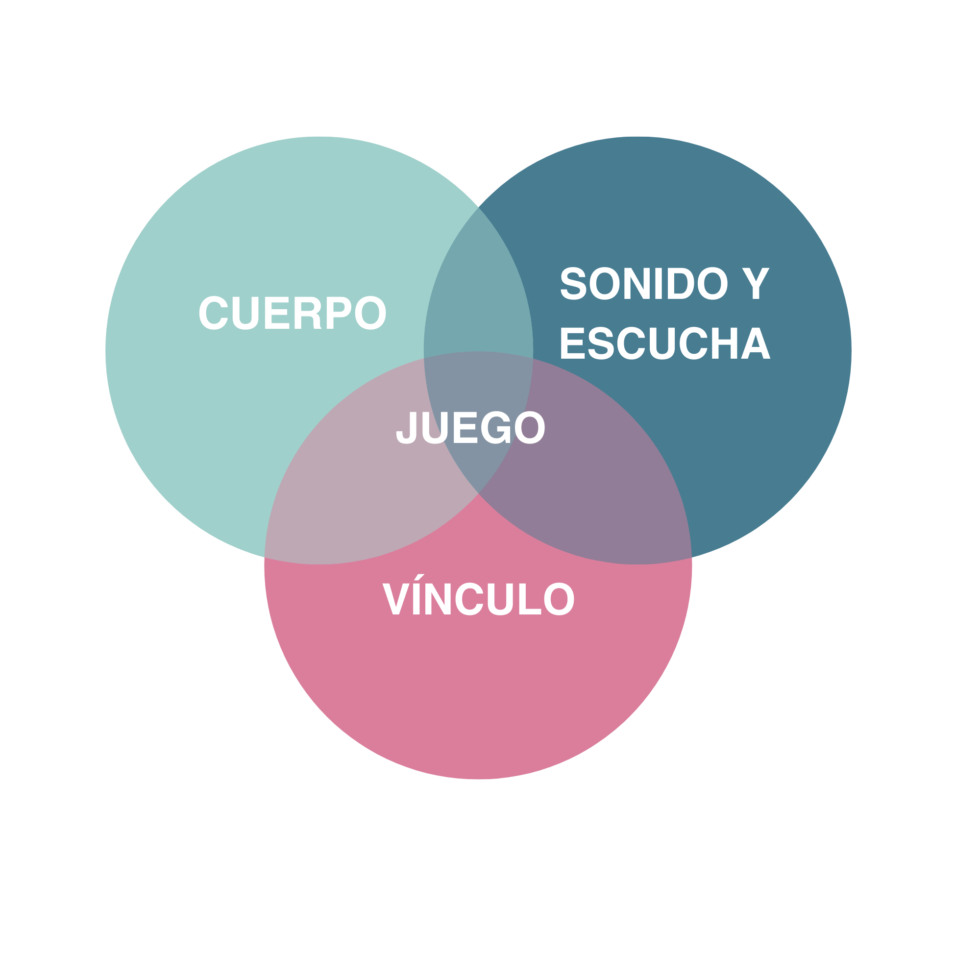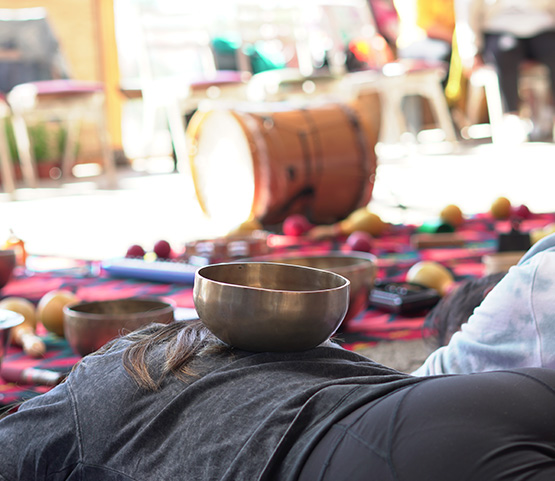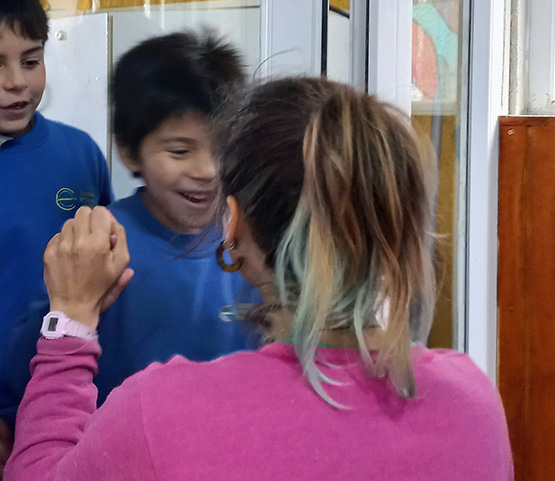PLAY AND CREATIVITY FOR THE DEVELOPMENT OF UNIVERSAL AND INCLUSIVE LEARNING
● Body, Sound and Bond
METHODOLOGY
After thirteen years of work, development, and research, we have created an innovative inclusive methodology that focuses primarily on the development of play and creativity as central pillars for the development of integral, universal, and inclusive learning. Our methodology aims to provide a wide range of strategies and practical tools to improve the quality of life of individuals.
Development of listening and socio-emotional skills at Pomaire School 2023.
As a result of systematic work in different territories and communities in Chile and other countries, combined with research and measurements carried out to date, and the positive outcomes observed, we have clearly established the three fundamental pillars that define our methodology: BODY, SOUND, and BOND. These are the foundations that structure, sustain, and shape our methodological framework, allowing us to create our innovative educational programs.
We use techniques derived from sound practices and somatic practices to replace spoken language, whenever possible and necessary. The goal is to create new codes of understanding that help students reduce the anxiety and frustration that verbal language often causes them, ultimately enabling them to communicate through intuition, listening, interaction, and play.

BODY
The word soma comes from the Greek and means live body. Somatic practices gather methods oriented to the conscious-body from the perspective of the personal experience. Somatic education is the consciousness of the body in movement.
Moshé Feldenkrais

Bodywork is approached from a somatic vision, which means, the body is the subject perceived in first person. This perspective supports the acceptance of integration through being in movement, strengthening with this view the experiences as a phenomenon of sensibilization and consciousness of ourselves as a body.
The practices we propose are based on an activation of the body as a subject, being conscious of it, through touching, making contact. This tactile practice brings us to the present in connection with a subject-body, without the dichotomy of mind and body.
SOUND & LISTENING
Deep listening is a way of listening incorporating all possible ways, listening no matter what you are doing. It explores the nature of involuntary listening, and voluntary and selective listening, cultivating in this way, a greater consciousness of the sound surroundings, inside and outside, promoting experimentation, improvisation, collaboration, play development and other social and creative skills, vitals for personal growth and community life.
Pauline Oliveros
Sound as a bridge of connection with the other and the environment, vibration as a common element and communication thread between bodies that feel and resound, it is being involved completely in deep listening and the effect that the sound has on us.
It is the senses that allow us to connect with the world and with the other, from this, we work with listening and with the experience of being touched by sound. The activation of listening as a determining sensor of discrimination, present, attention and focus, added to the sound touch, allow us to enhance the effect that our sessions have.

BOND
You will find out that the most interesting people are the ones that don’t fit in the average box; However, they will do what they need to do: their own ones.
Dra. Temple Grandin.

We put special emphasis in accompanying our participants from the acceptance and the profound respect for what they are. Accepting this way the integrity of each person in a reliable relationship. The purpose is to create unique spaces of trust, where we observe and share from the inside of each person involved. In this way, we create strong bonds of confidence, self-cognition, contention and mutual acceptance building an awaited space very well treasured by each participant.
